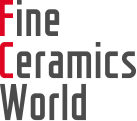Fine Ceramics, sometimes referred to as "advanced ceramics," are engineered materials that support the development of cutting-edge technology.
Fine Ceramics Use Highly Purified Raw Materials
Raw Materials Need to Meet Demanding Performance Requirements
Inorganic solid powders are converted into products with extreme density and hardness.

Fine ceramics are made from inorganic solid powders with precisely controlled properties of purity, particle size and particle distribution. The process involves mixing different powders together to produce a ceramic with specific material characteristics. This powdered mixture is blended with a binder so it can be molded to precise specifications, machined in a "raw" state, and then fired in a controlled furnace.
Firing, also called sintering, involves heating the raw ceramic to a temperature below the melting point. This eliminates the moisture and binder, shrinking the microscopic gaps between particles and fusing them together to form fine ceramic products of extreme hardness and density.
Fired object – Transmission electron micrograph
Fine Ceramics
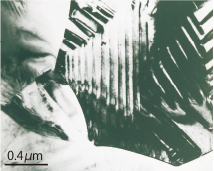
Lead zirconate titanate Pb (Zr, Ti) O3
Fired object (Pb [Zr, Ti] O3) – Transmission electron micrograph
A lamellar domain, oriented in multiple directions within one particle.
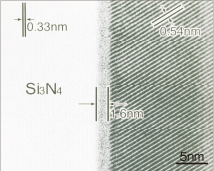
Silicon nitride Si3N4
Fired silicon nitride – High-resolution photograph
An amorphous phase is observed along the interface between silicon nitride particles and a crystalline grain boundary phase.
Ceramics

Porosities of ceramic
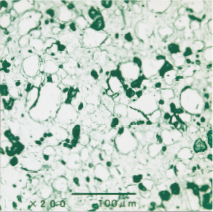
Crystalline structure of ceramic

Porosities of ceramic

Crystalline structure of ceramic
The term "Fine Ceramics" is interchangeable with "advanced ceramics," "technical ceramics" and "engineered ceramics." Use varies by region and industry.
People who read this page also read.
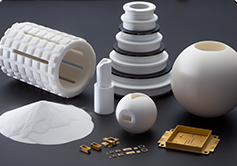
Fine Ceramics Production Process
Fine Ceramics Production Process
A Series of Complex Production Processes Are Used to Make Fine Ceramic Products
A Series of Complex Production Processes Are Used to Make Fine Ceramic Products
Introduction to Fine Ceramics
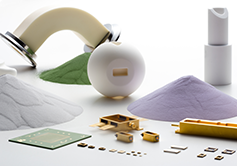
Different Types of Fine Ceramics
Different Types of Fine Ceramics
Wide Variety of Products to Support both Industry and Society
Wide Variety of Products to Support both Industry and Society
Introduction to Fine Ceramics

Four-Frame "Manga" Comics
Four-Frame "Manga" Comics
Easy to Watch, Touch and Understand Fine Ceramics
Easy to Watch, Touch and Understand Fine Ceramics
Four-Frame "Manga" Comics
If you want to use ceramics in business, click here.
Kyocera's Fine Ceramics products (All websites below open in a separate window.)
Product Category
 Semiconductor / LCD Processing Equipment
Semiconductor / LCD Processing Equipment
 Life / Culture / Industrial Machines
Life / Culture / Industrial Machines
 Wireless Communications
Wireless Communications
 Computer Peripherals
Computer Peripherals
 Environmental Preservation / Renewable Energy
Environmental Preservation / Renewable Energy
 Medical Equipment / Devices
Medical Equipment / Devices
 Single-Crystal Sapphire Products
Single-Crystal Sapphire Products
 Metallized / Vacuum Components
Metallized / Vacuum Components
 Electronics Industry
Electronics Industry
 Heaters
Heaters
 Piezoelectric Ceramics
Piezoelectric Ceramics
Search by Material
 Alumina
Alumina
 Silicon Nitride
Silicon Nitride
 Silicon Carbide
Silicon Carbide
 Sapphire
Sapphire
 Zirconia
Zirconia
 Cordierite
Cordierite
 Yttria
Yttria
 Aluminum Nitride
Aluminum Nitride
 Cermet
Cermet
 Mullite
Mullite
 Steatite
Steatite
 Forsterite
Forsterite
Search by Property/Characteristic


- Thermal Properties
- Coefficient of Thermal Expansion
- Thermal Conductivity
- Heat Shock Resistance

- Electrical Properties
- Insulation / Semiconductivity

- Chemical Properties
- Chemical Resistance
